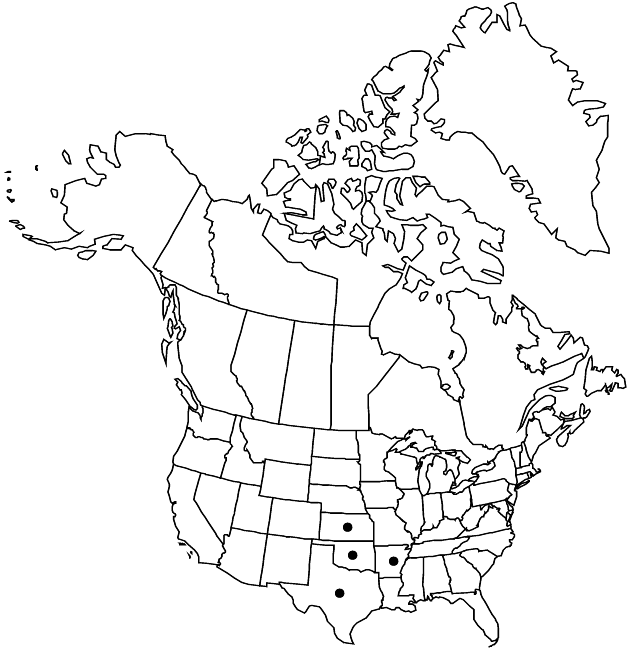Difference between revisions of "Croptilon hookerianum"
Bull. New York State Mus. Nat. Hist. 223: 61. 1921.
FNA>Volume Importer |
FNA>Volume Importer |
||
| Line 11: | Line 11: | ||
|name=Isopappus hookerianus | |name=Isopappus hookerianus | ||
|authority=Torrey & A. Gray | |authority=Torrey & A. Gray | ||
| + | |rank=species | ||
|publication_title=Fl. N. Amer. | |publication_title=Fl. N. Amer. | ||
|publication_place=2: 239. 1842 | |publication_place=2: 239. 1842 | ||
| Line 17: | Line 18: | ||
|name=Croptilon divaricatum var. hookerianum | |name=Croptilon divaricatum var. hookerianum | ||
|authority=(Torrey & A. Gray) Shinners | |authority=(Torrey & A. Gray) Shinners | ||
| + | |rank=variety | ||
}} {{Treatment/ID/Synonym | }} {{Treatment/ID/Synonym | ||
|name=Haplopappus validus subsp. torreyi | |name=Haplopappus validus subsp. torreyi | ||
|authority=E. B. Smith | |authority=E. B. Smith | ||
| + | |rank=subspecies | ||
}} | }} | ||
|hierarchy=Asteraceae;Asteraceae tribe Astereae;Croptilon;Croptilon hookerianum | |hierarchy=Asteraceae;Asteraceae tribe Astereae;Croptilon;Croptilon hookerianum | ||
| Line 33: | Line 36: | ||
|distribution=sc United States | |distribution=sc United States | ||
|discussion=<p>Varieties 3 (3 in the flora).</p><!-- | |discussion=<p>Varieties 3 (3 in the flora).</p><!-- | ||
| − | --><p>Morphologic differences among the three varieties are slight and they form a closely coherent group within the genus; corresponding differences in geography, habitat, and chromosome number provide a rationale for maintaining the taxonomic and nomenclatural distinctions. B. L. Turner et al. (2003, vol. 1) treated < | + | --><p>Morphologic differences among the three varieties are slight and they form a closely coherent group within the genus; corresponding differences in geography, habitat, and chromosome number provide a rationale for maintaining the taxonomic and nomenclatural distinctions. B. L. Turner et al. (2003, vol. 1) treated <i></i>var.<i> hookerianum</i> as including <i></i>var.<i> graniticum</i>. B chromosomes sometimes are present and appear to increase the number by a pair (E. B. Smith 1966).</p> |
|tables= | |tables= | ||
|references= | |references= | ||
| Line 64: | Line 67: | ||
-->{{#Taxon: | -->{{#Taxon: | ||
name=Croptilon hookerianum | name=Croptilon hookerianum | ||
| − | |||
|authority=(Torrey & A. Gray) House | |authority=(Torrey & A. Gray) House | ||
|rank=species | |rank=species | ||
| Line 76: | Line 78: | ||
|publication year=1921 | |publication year=1921 | ||
|special status= | |special status= | ||
| − | |source xml=https://jpend@bitbucket.org/aafc-mbb/fna-data-curation.git/src/ | + | |source xml=https://jpend@bitbucket.org/aafc-mbb/fna-data-curation.git/src/eaa6e58056e40c9ef614d8f47aea294977a1a5e9/coarse_grained_fna_xml/V19-20-21/V20_508.xml |
|tribe=Asteraceae tribe Astereae | |tribe=Asteraceae tribe Astereae | ||
|genus=Croptilon | |genus=Croptilon | ||
Revision as of 20:28, 16 December 2019
Stems erect, 20–80(–120) cm. Cauline leaf blades lanceolate to linear, reduced distally (becoming bractlike near heads), margins usually serrate apically, rarely entire. Peduncles stipitate-glandular, sometimes hispid as well. Involucres campanulate, (3.5–)5–8(–10) mm diam. Ray florets (10–)13–21(–29); corolla laminae 6–12 mm. Disc florets (20–)33–70(–108). 2n = 10, 12, 14.
Distribution

sc United States
Discussion
Varieties 3 (3 in the flora).
Morphologic differences among the three varieties are slight and they form a closely coherent group within the genus; corresponding differences in geography, habitat, and chromosome number provide a rationale for maintaining the taxonomic and nomenclatural distinctions. B. L. Turner et al. (2003, vol. 1) treated var. hookerianum as including var. graniticum. B chromosomes sometimes are present and appear to increase the number by a pair (E. B. Smith 1966).
Selected References
None.
Lower Taxa
Key
| 1 | Peduncles long-stipitate-glandular (longest hairs 0.4–0.5 mm, including gland), often slightly hispid proximal to heads; ray laminae 1–2.5 mm wide | Croptilon hookerianum var. validum |
| 1 | Peduncles short-stipitate-glandular (longest hairs 0.2–0.3 mm, including gland), never hispid; ray laminae (1.2–)2–3(–4) mm wide | > 2 |
| 2 | Peduncles densely stipitate-glandular; ray laminae 1.2–2.2 mm wide; sandy habitats | Croptilon hookerianum var. hookerianum |
| 2 | Peduncles sparsely stipitate-glandular; ray laminae (1.5–)2–3(–4) mm wide; granitic habitats | Croptilon hookerianum var. graniticum |